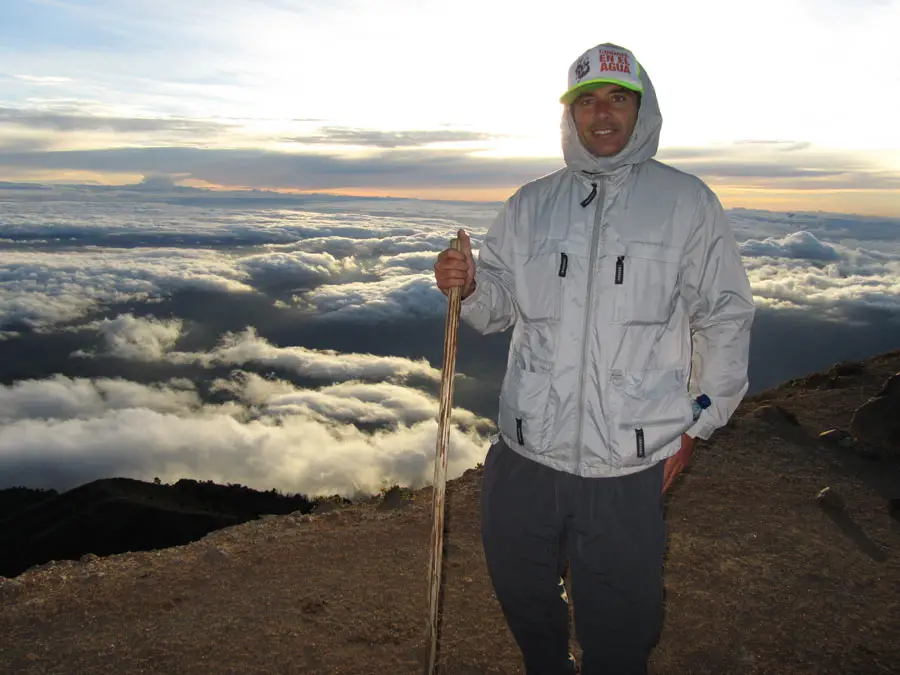Spring is just around the corner, so you must be waiting to get back to the outdoors. There is nothing like hiking to get some fresh air while you enjoy peace, quiet, and stunning views. But just like most outdoor activities, hiking also has some associated risks.
You might think you are going on an easy hike or that you have enough experience to handle it. But unexpected things always happen in the wilderness, so it is advisable to stay prepared.

I reached the summit!
That way, you can minimize your odds of meeting an emergency when you are out hiking. Being prepared is one of the crucial ways to ensure a safe and enjoyable hike. We have compiled this list of safety tips to help you prepare for a safe hiking trip.
Check the Weather
Spring can be a tricky time for a hike, especially due to the weather. The temperatures are fluctuating, and you can encounter brief but heavy rainfall. So, make sure that you get a detailed assessment of the climatic conditions at your destination before you start on your trip.
It will help you to pack the right gear and stay prepared during a hike. If you are not entirely satisfied with the results of apps or websites, you can check out the nearest weather radar in Climacell.co for accurate predictions. But as we said before, the weather in the mountains can change abruptly, so you should always be prepared for rain.
Consult a Park Ranger
Most people tend to choose a hiking destination in a national or state park. These parks always have rangers who can give you a bucket load of information about what you need to know. They know the areas like the back of their hand, so you can ask them for tips to stay safe in a particular location.
You can call up or visit the park office before you start off the trailhead. Park rangers will be able to tell you about what you may encounter, such as toxic fauna, critters, animals, or unpredictable terrain. They can also tell you how to stay safe within the park environment should you encounter an unexpected event.
Share Your Itinerary
Whether you are hiking alone or in a group, you should always create an itinerary and share that with people who are not joining you on the hike. The itinerary should include your starting point, starting time, route, stops, destination, and expected time to finish.
You should keep in mind that your hiking time can get extended if you encounter unfamiliar terrain, so make sure you inform the person about it. Alternatively, you can leave this information with a ranger at the park office so that they can send a search party if you do not return on time.
Form an Emergency Plan
You should always make a list of worst-case scenarios and plan your actions in such situations before you go on a hike. You should also know how you will contact someone if you meet an accident. Some of the finer points you should consider are as follows.
Cell phone service on the trail
Carrying a fully charged phone
Carrying power banks or solar chargers for your phone
Bringing a GPS or satellite messaging/calling device
Emergency contacts number for the park
Pack a List of Essentials
There are many professional lists of hiking essentials with emergency provisions. You can follow one of these lists or make your own. The objective is to make sure that you can respond appropriately to an emergency and stay prepared to spend at least one night without a roof over your head.
You should always follow this list to make sure that you do not forget to bring an essential thing on a hiking trail. Here is a list of essentials that you can use:
First aid kit
Navigation gadgets
Protection from the sun
Insulating jackets/raincoats
Light
Fire
High-quality duct tape
Multifunctional tool
Food
Water and water purification system
Emergency shelter
Extra hiking boots and socks
Modify Your First Aid Kit
A first aid kit is an obvious thing to bring on a hiking trip and must be a part of your essential thing to pack. It usually contains antiseptics, adhesive bandages, elastic wrap bandages, and sterilized cotton. You can use them to deal with ordinary hiking injuries such as minor cuts, scrapes, or bug bites.
You can buy one from a drugstore or assemble them on your own with tips from the Internet. If you are buying a first-aid kit set, you may have to add some other things depending on your health conditions.
Always make sure that you carry your medical history with you when you go hiking. Also, bring any medicines that you need regularly or during emergencies, like insulin injections or inhalers.
We hope that these tips prove useful to stay safe during your next hiking trip. Always make sure that you stay on the trail and do not deviate too much from it, even when you face difficult terrain or obstructions.
You should be more careful during the second part of your hike because your body would be tired and your energy levels well below. So take your time to complete the hike and always be ready to turn back if you find that the circumstances are not favorable. Remember that your health and safety are much more important than reaching the summit.
